Over the last couple of weeks, a Herculean operation has been taking place at Limpopo-Lipadi: 20 bull elephants are being captured to be relocated to Makgadikgadi National Park, located 650 kilometres from the Reserve. Please read our post of 13 July 2020 to understand more of the background to this translocation.
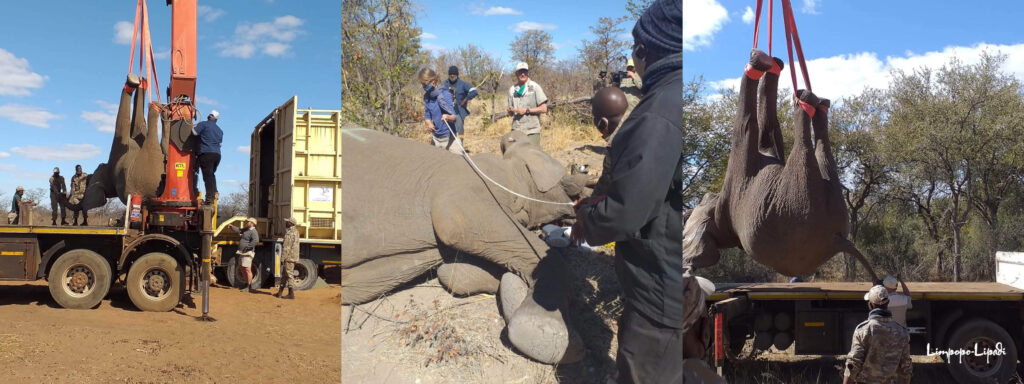
The elephant translocation project started on Thursday, 23 July and by late afternoon, the first two elephants were making the 650-kilometre journey to their new home. Only two elephants can be transported at a time and so it will take until mid-August to complete the translocation of the 20 bull elephant that the Reserve has permission to move.
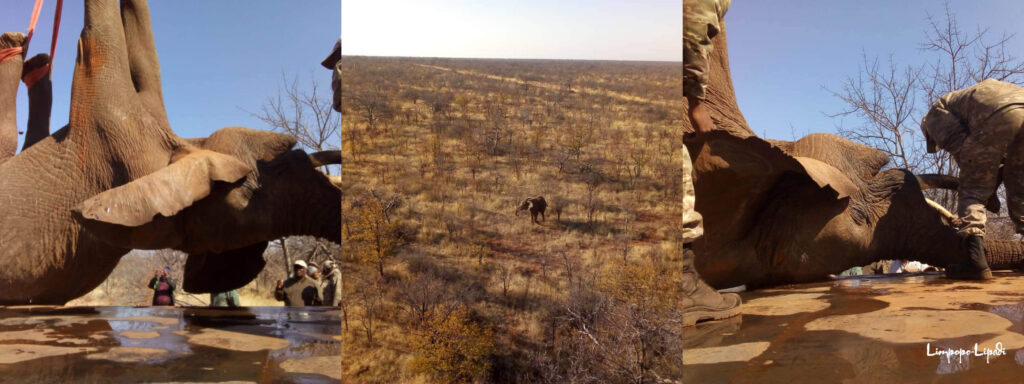
It is a massive logistical exercise and may even be the largest single translocation of bull elephants every undertaken in southern Africa. A total of 37 people are directly involved, from the Department of Wildlife and National Parks officials, police, veterinarians, helicopter pilot, truck drivers, hoist operators. Plus, Limpopo-Lipadi personnel, including management, Anti-Poaching Unit, game guides, maintenance, etc.
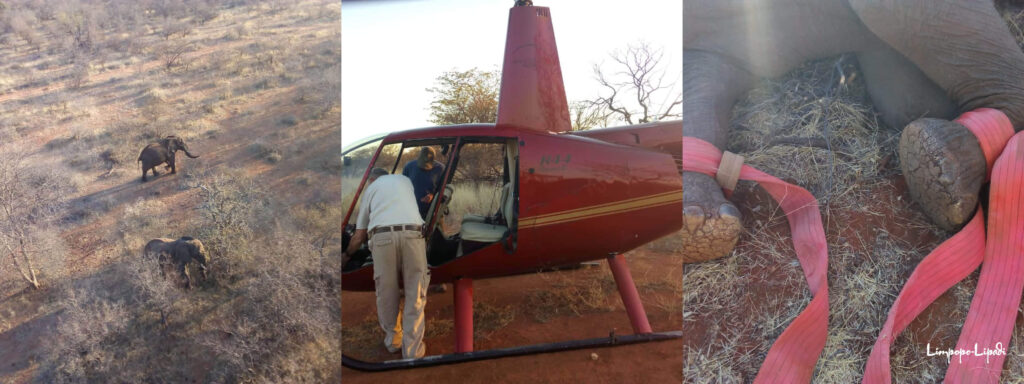
If you are interested to know precisely how this whole operation works? Here is the detail.
– The helicopter pilot and Erik Verreynne are airborne early in the morning and will conduct a reconnaissance flight to identify an elephant for capture;
– Once an elephant has been identified, the helicopter is used to try and drive the elephant towards the closest road or track and is then darted from the air; the drug takes 3-4 minutes to take effect;
– The ground crew are positioned at the APU Boma and are in radio contact with the helicopter; as soon as an elephant has been identified for darting, they move to its location with a flat-bed recovery vehicle which is fitted with a mechanical hoist/crane.
– First prize is that the elephant goes down close to a road or track and that vehicle access is easy, but failing that a road has to be cut to its location, and so the recovery truck is accompanied by maintenance and APU personnel with the JCB backhoe loader, chainsaws, axes and pangas.
– Once the elephant is down the veterinary crew assess the health of the animal, take blood samples and administer antibiotics purely as a precautionary measure. They then do ear and tusk notching and take photographs and basic measurements for identification purposes.
Using a mechanical hoist, the elephant is then hoisted onto the recovery vehicle, and the vehicle then returns to the APU Boma where the recovery cage and transport vehicles are based.
– Again, using the mechanical hoist, the elephant is moved from the recovery vehicle onto a trailer and conveyer belt and from there into the recovery cage. This is a very difficult process and requires high skill levels from the hoist operator as the recovery cage only allows for loading from the side. The side panel of the recovery cage is then secured and the vet enters the cage and administers the antidote drug. The elephant revives within about 3 minutes and as soon as it gets to its feet it instinctively moves backwards (a sub-conscious movement away from the perceived danger) and backs itself into the adjacent transportation crate which is mounted on the back of the transport vehicle. The transport crate is then secured.
– The whole operation then starts again to find and dart the next elephant.
For the first elephant captured, the operation to get the elephant darted, crated and ready for translocation took 3 hours but the second elephant was much quicker and was completed in about an hour and a quarter.
– Due to the size of the elephants (only bull elephants are being translocated), the transport crates are the biggest available and the transport vehicle can only take two at a time.
– The distance by road to the release site is about 650 kilometres and with a speed restriction of 75 km per hour when loaded, the outward trip takes around 10 hours and the return trip about 8 hours. The transport vehicle is required to have a police escort and arranging this particular aspect presented some interesting logistical challenges.
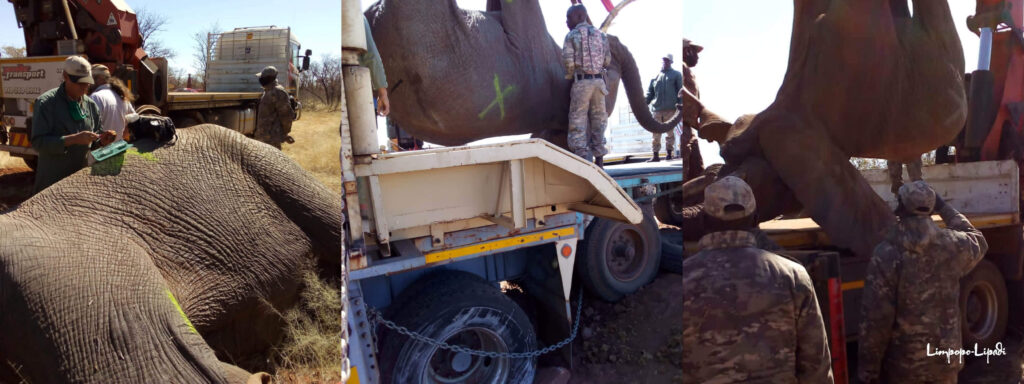
The whole operation is followed by a videographer, but we’d already like to share some images ‘hot off the press’ to get a good feel for the extent of this massive operation. Not only shareholders of Limpopo-Lipadi are eager to learn more, but it has also raised awareness from local radio and TV. So last Wednesday this story was a feature on Botswana TV.
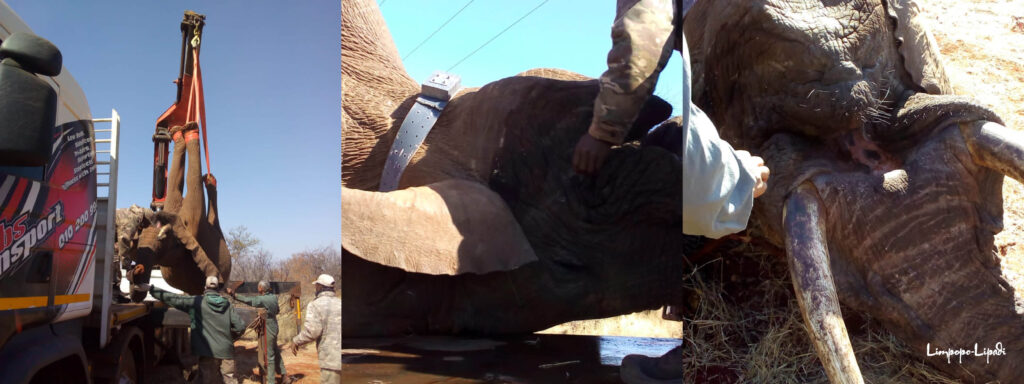
Still some elephants to go, so let’s keep our fingers crossed that they also make it safely across to their new home. And when the translocation will be completed a big cheer for the team that has made it happen!
